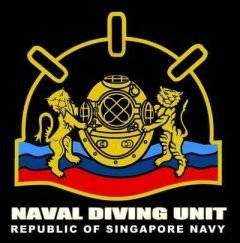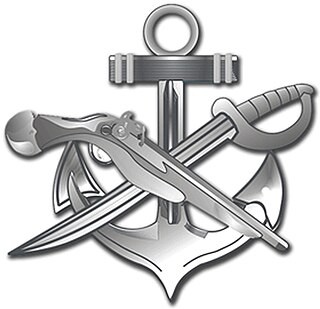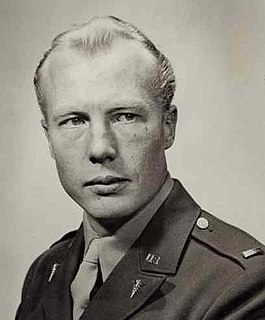The Naval Special Operations Group (NAVSOG) or Special Warfare Group (SWAG) is a unit of the Philippine Navy trained in special operations, sabotage, psychological and unconventional warfare and is heavily influenced by the United States Navy SEALs.
The Naval Special Operations Group (NAVSOG) or Special Warfare Group (SWAG) is a unit of the Philippine Navy trained in special operations, sabotage, psychological and unconventional warfare and is heavily influenced by the United States Navy SEALs.
The predecessor unit to the NSWG/SWAG (the Underwater Operations Team or UOT) was activated on 5 November 1956 as a special operations unit of the Philippine Navy. [2] Patterned after the US Navy Underwater Demolition Teams and the Italian Decima Flottiglia MAS with modifications for Philippine conditions, from its founding the UOT was charged with conducting underwater operations in waterways, beach areas and harbors in support of Philippine naval operations. These operations included underwater explosive disposal, mine countermeasures, salvage and search and rescue. In 1959 the UOT was expanded and redesignated the Underwater Operations Unit, then as the Underwater Operations Group (UOG). [3]
The UOG was then renamed the Naval Special Warfare Group, and later on as the Naval Special Operations Group. The unit's tasks were also expanded to cover all facets of unconventional warfare in a maritime and riverine environment. This includes but is not limited to demolition, hostage rescue, harassment, force protection and maritime tactical operations. The unit changed their name from SWAG to NAVSOG on May 30, 2005. [4]
NAVSOG is headquartered at Sangley Point, Cavite City. It has eight units located across the Philippines, from Naval Operating Base San Vicente at Santa Ana, Cagayan in the north to Naval Station Zamboanga in the south. Each unit is attached either to a task force or a naval force and has a complement that varies from 3 to 6 SEAL Teams, with each team consisting of an officer and seven enlisted men. All team members "…are trained tactical divers, parachutists and demolitionists and in the execution of Special Warfare Operations from the Sea, Air and Land.” To become a qualified Philippine Navy SEAL, officers and enlisted men must successfully complete the six-month Basic Naval Special Warfare/SEAL Course. [5]
The unit specializes in SEa, Air, Land (SEAL) operations ranging from reconnaissance, close combat, demolition, intelligence and underwater operations in support of overall naval operations. The unit gained prominence in a number of counter-terrorism operations, most notably against the Abu Sayyaf Group, and is known for its highly-demanding physical training program which is based on the United States Navy SEAL program. [6]
The NAVSOG training program is known as Basic Naval Special Operations Course (BNSOC). The program is physically and mentally demanding and is regarded as one of the toughest military selection programs around the world. Candidates have to swim 3 kilometers and run 10 kilometers every day. Furthermore, they must swim 14.6 nautical miles from Roxas Boulevard in Manila to Naval Station Sangley Point without any rest. They also undergo "Hell Week," considered as the most demanding week of NAVSOG training. Candidates have to carry out demanding physical team events with their boat crews with merely a couple of hours sleep for an entire week. In one BNSOC class, only 21 students remained from 79 applicants who originally started the NAVSOG training program. These are only the common and basic training phases of NAVSOG, with further evolutions of the training (including interrogation resistance) remaining highly classified.
Under Filipino law, women can apply to become SEALs, but thus far none have. Prospective SEALS are put through BUD/S, which lasts for four months and can often stretch into six with breaks between phases. [7]
There are similarities between the Philippine Naval Special Warfare Group and the U.S. Naval Special Warfare Command. NAVSOG operators are trained and operate in a manner similar to the U.S. Navy SEALs. They also wear a trident similar to their U.S. Navy counterparts.
The Filipino counterpart of the U.S. counterterrorist United States Naval Special Warfare Development Group (DEVGRU) is the Philippine Naval Special Reaction Group (SRG), which operates under the direction of Naval Intelligence. [8]


They frequently train and operate with their American counterparts alongside the Philippine Marines. [9] [10]
NAVSOG is composed of the following units as of 2014: [11]
Each unit is made up of 3 to 6 special operations and support teams, each of which have 8 soldiers (1 officer, 7 enlisted).

The United States Navy Sea, Air, and Land (SEAL) Teams, commonly known as Navy SEALs, are the U.S. Navy's primary special operations force and a component of the Naval Special Warfare Command. Among the SEALs' main functions are conducting small-unit special operation missions in maritime, jungle, urban, arctic, mountainous, and desert environments. SEALs are primarily tasked with surveilling, capturing, or killing of high priority targets, and gathering intelligence behind enemy lines on enemy forces, locations, and activities for future military actions.

The Underwater Demolition Teams (UDT) were a special-purpose force established by the United States Navy during World War II. They came to be considered more elite and tactical during the Korean and Vietnam Wars. Their primary WWII function began with the reconnaissance and removal of natural or man-made obstacles on beaches prior to amphibious landings. They later were assigned to assist in the recovery of Space capsules/astronauts after splash down in the Mercury and Apollo space flight programs. The United States Navy's Underwater Demolition Teams were pioneers in underwater demolition, closed-circuit diving, combat swimming, and midget submarine operations. Commando training was added making them the forerunner to the United States Navy SEAL program that exists today.

The United States Naval Special Warfare Command (NAVSPECWARCOM), also known as NSWC or WARCOM is the Naval component of United States Special Operations Command, the unified command responsible for overseeing and conducting the nation's special operations and missions.

The Naval Special Warfare Command, commonly known as the Royal Thai Navy SEALs, is the special operations force of the Royal Thai Navy.

The Naval Diving Unit (NDU) is a special forces unit of the Republic of Singapore Navy, and is regularly tasked with salvage operations, underwater mine demolition, commando and frogman-type warfare.
Underwater demolition refers to the deliberate destruction or neutralization of man-made or natural underwater obstacles, both for military and civilian purposes.

Kopaska is the premier frogman and underwater demolition unit of the Indonesian Navy. The unit's motto is in Sanskrit: "Tan Hana Wighna Tan Sirna". The unit's main duties are underwater demolition, destroying main underwater installations, reconnaissance, prisoner snatches, preparing beaches for larger naval amphibious operations, and counter-terrorism. During peacetime, the unit also deploys a team to serve as security personnel for VIPs and VVIPs. The personnel of Kopaska are recruited from Indonesian Navy seamen. Like other Indonesian special forces, Kopaska is trained to be able to conduct operations in the sea, including underwater, on land and airborne.
Dennis Chalker is a retired Navy SEAL, inventor and author who has written six books about the United States Navy SEALs.

Naval Amphibious Base Coronado is a naval installation located across the bay from San Diego, California. The base, situated on the Silver Strand, between San Diego Bay and the Pacific Ocean, is a major Navy shore command, supporting over 30 tenant commands, and is the West Coast focal point for special and expeditionary warfare training and operations. The on‑base population is 5,000 military personnel and 7,000 students and reservists. The base is one of the eight components of Naval Base Coronado (NBC).

The US employs divers in several branches of the armed forces, including the navy, army, marines, air force and coast guard.

The Special Warfare Combatant-craft Crewmen is a United States Naval Special Warfare Command team that operates and maintains an inventory of small craft used to conduct special operations missions, particularly those of the U.S. Navy SEALs. Individually, SEALs and SWCC go through similar but separate specialized training programs both based in Naval Amphibious Base Coronado. SWCC training emphasizes special operations in the maritime environment. SWCC are trained extensively in crafts and weapons tactics, techniques, and procedures. Focusing on clandestine infiltration and exfiltration of SEALs and other special operations forces, SWCC provide dedicated, rapid mobility in shallow water areas where large ships cannot operate. Their capabilities include Direct Action through coastline or rivers, Special Reconnaissance, Coastal Patrol and Interdiction of suspect ships and surface craft. SWCC specialize in swift mobility; due to this, they also have a high level of training in tactical driving and convoy operations. They've conducted many missions alongside SEALs from providing reconnaissance to clandestine infiltration and hot extractions.

The Republic of Korea Navy Special Warfare Flotilla is a special operations unit of the Republic of Korea Navy. The flotilla is also known as ROKN UDT/SEALs, because the UDT/SEAL is the most publicly known branch of the flotilla.

The average member of the United States Navy's Sea, Air, Land Teams (SEALs) spends over a year in a series of formal training environments before being awarded the Special Warfare Operator Naval Rating and the Navy Enlisted Classification (NEC) 5326 Combatant Swimmer (SEAL) or, in the case of commissioned naval officers, the designation 1130 Special Warfare Officer. All Navy SEALs must attend and graduate from their rating's 24-week "A" School known as Basic Underwater Demolition/SEAL (BUD/S) school, a basic parachutist course and then the 26-week SEAL Qualification Training program.

The Armed Forces of the Philippines Special Operations Command is the unified special operations command of the Armed Forces which responsible for planning, conducting, and supporting special operations. Although the current AFPSOCOM was established in April 2018 on the basis of the Philippine Army Special Operations Command and the AFP Joint Special Operations Group, it traces its origins to the Philippine Army Special Warfare Brigade (ASWABde), established on January 16, 1978.

Thomas L. Brown II is a retired United States Navy officer and the first Navy officer to command Special Operations Command South, based in Homestead Joint Air Reserve Base, Florida.

The Naval Special Warfare Development Group (NSWDG), commonly known as DEVGRU or SEAL Team Six, is the United States Navy component of the Joint Special Operations Command (JSOC). The unit is often referred to within JSOC as Task Force Blue. DEVGRU is administratively supported by Naval Special Warfare Command and operationally commanded by the Joint Special Operations Command. Most information concerning DEVGRU is classified and details of its activities are not usually commented on by either the Department of Defense or the White House. Despite the official name changes, "SEAL Team Six" remains the unit's widely recognized moniker.

Sean A. Pybus is a retired United States Navy Vice Admiral who last served as the deputy Commander, U.S. Special Operations Command (USSOCOM) from 2014 to 2016. He previously served as the Commander, Naval Special Warfare Command from 2011 to 2013.

Special Forces Underwater Operations (SFUWO) is the term for United States Army Special Forces combat operations involving the use of underwater infiltration methods. These typically involve the use of closed circuit dive equipment to infiltrate a beach landing site (BLS) undetected. The US Army Special Forces, also known as Green Berets have been conducting maritime operations and underwater operations since their founding in 1952. Currently, every Special Forces company within the seven Special Forces Groups mans, trains, equips and deploys a SFUWO Operation Detachment Alpha (SFOD-A). These twelve-man teams train for SFUWO as their primary infiltration method when conducting one of their missions of Unconventional Warfare, Direct Action, Counter-terrorism or Foreign Internal Defense, among others.
| Wikimedia Commons has media related to Naval Special Operations Group . |